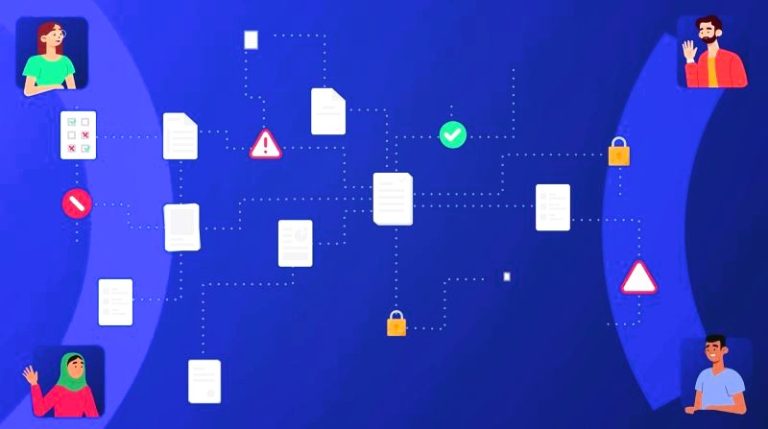

In today’s digital age, one of the most common cyber threats affecting businesses and employees alike is phishing. This sneaky tactic continues to evolve, targeting individuals and organizations to gain access to sensitive information. From employee credentials to financial data, phishing attacks can be devastating if not properly understood and mitigated. This guide will help you grasp what phishing is, why it’s so dangerous, and how you can protect your business.
What is Phishing?
Phishing is a form of cyberattack in which attackers impersonate trusted entities to trick individuals into divulging sensitive information, such as login credentials, financial data, or personal information. Often conducted via email, phishing attacks can also occur through SMS (known as “smishing”), voice calls (“vishing”), and even social media. These fraudulent messages are designed to look authentic, mimicking reputable companies, co-workers, or even family members to lure the recipient into a false sense of trust.
Why Phishing is Dangerous for Businesses
For businesses, phishing poses a serious threat. The impact of a successful phishing attack can extend far beyond the immediate loss of data. It can lead to:
1. Financial Losses: Attackers may gain access to company accounts or sensitive customer information, leading to direct financial losses.
2. Reputational Damage: When a company’s data is compromised, customers may lose trust, damaging the business’s reputation.
3. Productivity Disruption: Phishing attacks often result in downtime as IT teams work to mitigate damage and restore systems.
Even more alarming, phishing attacks are becoming increasingly sophisticated. Hackers often use spear-phishing techniques, where emails are tailored specifically to their targets, making them harder to detect.
Recognizing the Types of Phishing Attacks
There are several types of phishing attacks that businesses and employees should be aware of:
• Email Phishing: The most common type, where attackers send fake emails pretending to be from legitimate companies.
• Spear Phishing: A more targeted approach, where attackers use personal information to craft convincing messages aimed at specific individuals.
• Whaling: Aimed at executives or high-level employees, these attacks seek to steal confidential business information.
• Clone Phishing: Attackers clone legitimate emails and resend them with malicious links, making them appear more trustworthy.
How Does a Phishing Attack Work?
So, how does a phishing attack work? Phishing attacks typically follow a simple but effective pattern. An attacker sends a message that appears to be from a trusted source, urging the recipient to click on a link, download an attachment, or enter personal information. Once the link is clicked, it often leads to a fake website that looks identical to a legitimate one, where the individual unknowingly enters sensitive information. This information is then captured by the attacker and can be used for fraudulent purposes, including accessing business accounts or stealing funds.
How Business Owners and Employees Can Protect Against Phishing
Protecting against phishing requires a combination of technical safeguards and user awareness. Here’s what business owners and employees can do to strengthen their defenses:
1. Train Employees on Phishing Awareness: Regular training helps employees recognize phishing attempts. By understanding the signs, such as misspelled domains, unexpected requests, and suspicious links, they can avoid falling victim.
2. Use Multi-Factor Authentication (MFA): MFA requires users to provide two or more verification factors to gain access. Even if attackers manage to steal passwords, MFA acts as an additional layer of security.
3. Implement Email Filtering: Advanced email filters can detect and block potential phishing messages before they reach employees. Some filters use machine learning to improve their ability to catch sophisticated phishing emails.
4. Verify Unusual Requests: Employees should always verify unusual requests, especially those asking for financial or sensitive information. A quick phone call to the supposed sender can confirm whether the email is genuine or a phishing attempt.
5. Keep Software Updated: Many phishing attacks exploit vulnerabilities in outdated software. Keeping all systems, browsers, and applications up to date can reduce the chances of a successful phishing attempt.
Building a Security-Conscious Workplace
The best defense against phishing is a security-conscious workplace where everyone understands the role they play in protecting sensitive information. For business owners, cultivating a strong security culture means consistently emphasizing the importance of cyber hygiene and encouraging employees to ask questions if something seems suspicious.
Consider running regular simulated phishing tests to help employees spot real phishing attempts. These exercises can show employees firsthand how a phishing attack might look in their inboxes, helping them recognize and avoid such threats in the future.
The Importance of Reporting Phishing Attempts
Finally, encourage employees to report phishing attempts immediately. By fostering a workplace where reporting is encouraged, business owners can track and mitigate phishing threats more effectively. Early detection can prevent a minor phishing attempt from escalating into a significant data breach.
Conclusion
Phishing is an ever-present threat that evolves as cybercriminals adopt new techniques to deceive individuals and businesses. For business owners and employees, understanding phishing and knowing how to recognize and respond to it is crucial. By implementing robust security practices and fostering a culture of vigilance, companies can significantly reduce the risk of falling victim to a phishing attack. Taking these precautions not only protects sensitive information but also strengthens the overall resilience of the organization against a wide range of cyber threats.


